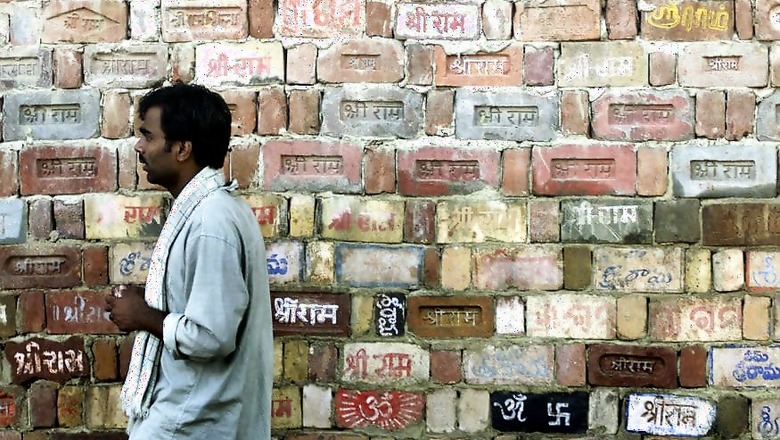
views
The Supreme Court’s suggestion for the parties in the Ram Janmabhoomi-Babri Masjid case to negotiate and make an out-of-court settlement is only the latest attempt to solve the dispute.
But what is the dispute all about? How did the case develop?
Here is a timeline to the events leading up to the case:
- 10th-11th Century: Hindu religious organisations claim a Ram temple was built at his birthplace in Ajodhya during this period.
- 1194 AD: Muslim religious groups claim that the Turkish sultans found a mound at Ram Kot in Ajodhya.
- 1528 AD: First Mughal Emperor Babar's general, Mir Baqi, with the guidance of one Musa Ashikan built a mosque at Ram Kot site and named it after Babar, implying it was either built on his orders, or in his honor.
- 1853: A sect called the Nirmohis claimed the structure, contending that a mosque stood on the spot where a temple had been destroyed.
- January 19, 1885: A Hindu Mahant Raghubir Das filed a case before Faizabad sub-judge, Pandit Hari Kishan, to build a temple over the mosque, claiming that it was the birth place of Ram. It was the first title suit.
- December 22, 1949: Icons of Ram and Sita 'appear' in Babri masjid. The Wakf Board, claiming ownership of the land, and Hindu parties file counter civil suits, government declares the site 'disputed' and locks the building gates.
- 1984: Vishwa Hindu Parishad and BJP launch a movement for building Ram Janmabhoomi Temple at 'Dharam Sansad' (Religious parliament).
- February. 11, 1986: During Rajiv Gandhi-led congress regime, Faizabad district judge orders the opening of the disputed structure to Hindus.
- November 9, 1989: The first stone of a temple was laid by VHP and other Hindu organisations. Temple's foundation laid next day by a Harijan from Bihar, Kameshwar chaupal; the plinth was dug 192 feet away from the masjid.
- December 23, 1990: Evidence for the RAM Janmabhoomi temple presented to the central government by the VHP.
- December. 6, 1992: RSS, VHP, BAJRANG DAL AND BJP 'Kar Sewaks' demolish disputed structure and make a makeshift temple there. Incident triggers large-scale rioting in the country.
- December 16, 1992: P.V. Narasimha Rao-led Congress government sets up one-man M.S. Liberhan Commission to probe the circumstances that led to the demolition of the Babri Masjid.
- June 30, 2009: The Liberhan Commission submits its report to PM Manmohan Singh. The report holds 68 people culpable, including top BJP leaders, L.K. Advani, DR. Murli Manohar Joshi, and former NDA PM Atal Bihar Vajpayee, and more critically, Kalyan Singh, former UP Chief Minister, in whose regime the Babri Masjid was demolished.
- July 26, 2010: Special bench of the Allahabad High Court reserves the judgment in the title suit.
- September 24: The court to announce much-awaited Ajodhya verdict.
- September 23: The Supreme Court delays the Allahabad high court verdict by a week.
- September 28: The apex court gives the go-ahead to the High Court to pronounce its verdict in over 60-year-old case.
- September 30, 2010: A special full bench of the Allahabad HC awards two-thirds of Ajodhya site to Hindu parties, One-third to Waqf board.
- December 2010: Hindu Mahasabha, Sunni Waqf Board move SC challenging part of the HC verdict contending that the judgement is based on faith and not on evidence.
- May 2011: SC stays HC order splitting disputed site in 3 parts, says status quo will remain.
- March 21, 2017: SC suggest out of the court settlement as the Ram Temple in Ayodhya is a "sensitive", "sentimental issue


















Comments
0 comment